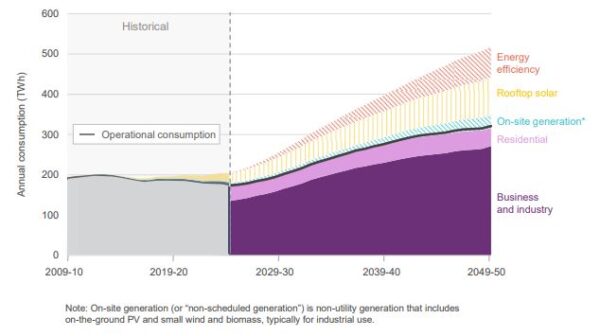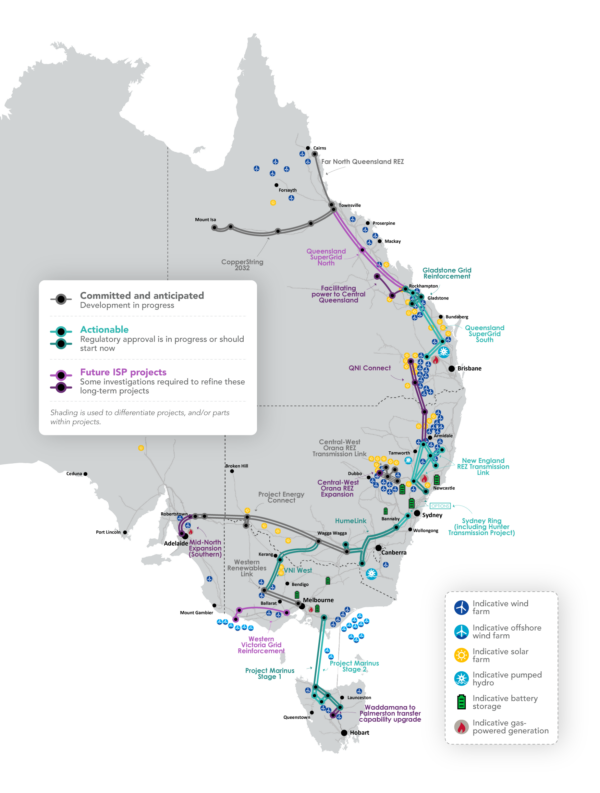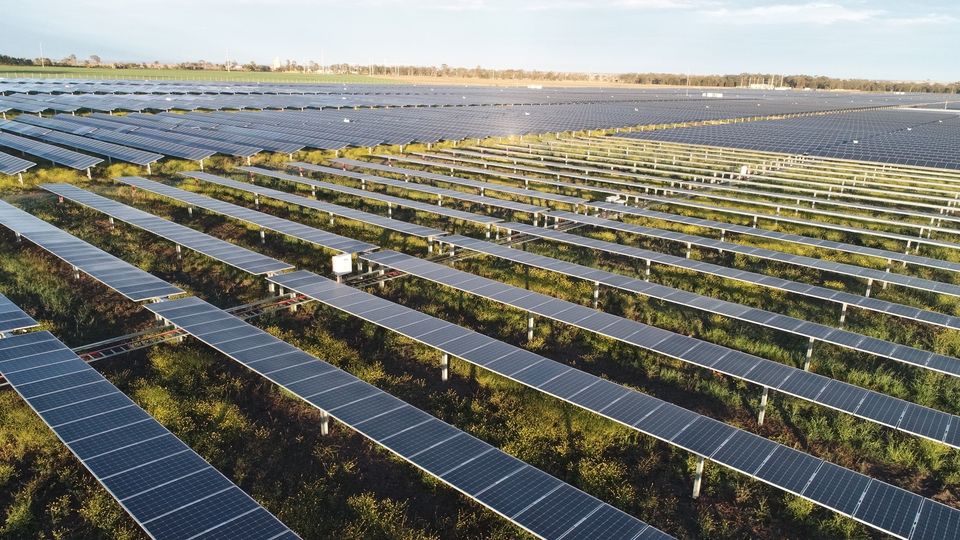The Australian Energy Market Operator (AEMO) has today published the draft version of its 2024 Integrated System Plan (ISP) outlining an optimal development path of investments it says are essential to maintain reliable electricity supply as Australia makes the switch from fossil fuels to firmed renewables.
“The energy transition is a once-in-a-century change to the way energy is generated, stored, moved, and used across the economy,” AEMO said. “As well as the shift from coal to firmed renewables, it will treble capacity to meet future demand, and enable a two-way flow of electricity across the grid.”
The market operator said urgent action is needed to meet consumers’ energy needs for secure and reliable energy, and to achieve net zero emissions targets as the National Electricity Market (NEM) moves away from its traditional dependency on coal-fired generation.
“The plan maps out urgent investment so that homes and businesses continue to access reliable and affordable electricity, both in the coming decade when 90% of coal generation is expected to retire, and beyond to 2050,” AEMO Chief Executive Officer Daniel Westerman said.
“In the next decade, this plan shows the need for 5,000 kilometres of transmission, both new projects and those underway, triple renewable generation and double dispatchable storage, hydro and gas-powered generation.”
The Draft 2024 ISP forecasts that Australia’s remaining coal fleet will close two to three times faster than originally announced with the most likely ‘step change’ scenario – assessed as the most likely scenario for planning activities by AEMO based on input from more than 1,300 industry stakeholders – showing about 90% of the current 21 GW of coal capacity will retire by 2034-35, and all before 2040.
“Our updated analysis shows that Australia’s coal power stations are likely to close earlier than planned, and Australians are electrifying their homes and businesses at a faster rate,” Westerman said.

Image: AEMO
Overall, allowing for continued growth in energy efficiency, electricity consumption across the NEM is forecast to continue rising from about 195 TWh to more than 420 TWh in 2049-50.
Forecasts show growth in residential consumption increases to 150 TWh by 2050. However, uptake of energy efficient measures offset this increase, resulting in underlying consumption of 110 TWh. Continued growth in rooftop solar further reduces reliance on the grid to only 40 TWh across the year by 2050 – about the same as what it is today.
Business and industry total consumption is however forecast to more than double from today’s 145 TWh to almost 345 TWh in 2050.
AEMO said the transformation of Australia’s energy system is well underway with new investments in renewable generation and storage accelerating but “the need for investment in infrastructure remains urgent.”
Previous iterations of the ISP set an ambitious pace for investment and AEMO said those projects now need to be delivered with “the possibility of replacement generation not being available when coal plants retire real and growing, and a risk that must be avoided.”
The optimal development path (ODP) identified by AEMO in the Draft 2024 ISP calls for investment that would triple grid-scale variable renewable generation to 57 GW by 2030 and increase it seven-fold to 126 GW by 2050.
It would also add almost four times the firming capacity from dispatchable storage, hydro and gas-powered generation to 74 GW by 2050 and support a four-fold increase in rooftop solar capacity reaching 72 GW by 2050, and facilitate the use of consumer-owned batteries and virtual power plants (VPPs) to deliver 27 GW of flexible demand response for the NEM.

AEMO said close to 10,000 kilometres of new and upgraded transmission to connect these assets to consumers will be needed by 2050.
The ODP contains largely the same major transmission projects as in the 2022 ISP. Five committed and anticipated projects are underway for delivery. Five previously actionable projects remain actionable and are advancing, and two future projects have now progressed to actionable status as planned.
Westerman did acknowledge that progress on planned projects is being slowed by factors including community acceptance, cost pressures, supply chain issues, workforce shortages and investment uncertainty.
“While progress is being made, the transition is urgent and faces significant risks if market and policy settings, social licence and supply chain issues are not addressed,” he said.
Clean Energy Council Chief Executive Kane Thornton said the latest draft ISP is a call to action that places the urgent need to support the industry in building new renewable generation and storage in sharp focus.
“This reaffirms renewables are the key to meeting the energy needs of Australian homes and businesses, and our commitment to achieving net-zero by 2050,” he said.
“Renewables lead the pack in providing the most reliable energy at the lowest cost, right now, and into the future.
“The debates around this are effectively over and can now be placed in the category of unhelpful distractions as the renewables industry gets on with the job of building what is required to secure Australia’s future.”
Public consultation will be open on the draft ISP until 16 February 2024, with the final report to be published by 28 June 2024.
This content is protected by copyright and may not be reused. If you want to cooperate with us and would like to reuse some of our content, please contact: editors@pv-magazine.com.









3 comments
By submitting this form you agree to pv magazine using your data for the purposes of publishing your comment.
Your personal data will only be disclosed or otherwise transmitted to third parties for the purposes of spam filtering or if this is necessary for technical maintenance of the website. Any other transfer to third parties will not take place unless this is justified on the basis of applicable data protection regulations or if pv magazine is legally obliged to do so.
You may revoke this consent at any time with effect for the future, in which case your personal data will be deleted immediately. Otherwise, your data will be deleted if pv magazine has processed your request or the purpose of data storage is fulfilled.
Further information on data privacy can be found in our Data Protection Policy.